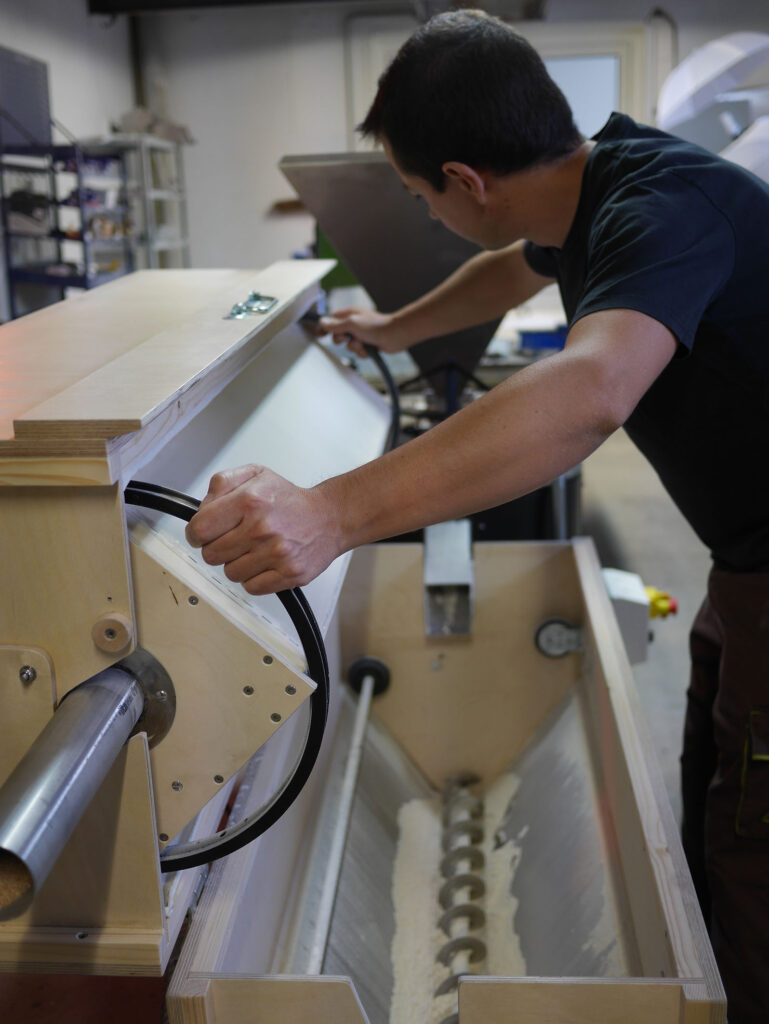A seed that is unrolled and not crushed by the weight of the grinding wheel
As you now know, in an Astrié Mill, the flour is no longer crushed by the weight of the upper millstone, but is unrolled between the millstones.
The oscillating system developed by the Astrié brothers means that the rotating millstone does not crush the grain.
Unrolling the seed preserves the germ and the kernel
Unrolling the grain between the millstones allows it to be
- gently remove the husk from the wheat (i.e. the bran)
- the bran comes out through a special outlet
- the wheat germ is unrolled and sieved to make your flour

Two bran/flour outputs
If the seed is crushed, the germ and kernel are heated and oxidised, and lose their nutritional qualities.
In the case of unrolling, not only are the bran and germ not mixed, but the germ and its kernel are preserved.
What’s in the germ and the kernel?
It is in the germ and kernel of the grain that all the cereal’s nutrients are found: vitamins, amino acids, starch.
- The kernel contains all the nutritional reserves (starch and proteins)
- The germ contains lipids, proteins, minerals and vitamins.
Photos all rights reserved: https://goo.gl/uDARhp
The benefits of preserving the germ and the kernel
This is what reflects your cereal. So it’s the kernel and the germ that need to be preserved to give your flour its full value.
That’s why the Astrié Mill makes the difference, because it preserves the nutritional qualities of the cereal in the flour to make it more digestible.

Do you need advice on installing an Astrié Mill?
At Astréïa, advice is an integral part of our DNA.
We take the time to talk to you about your activities, your objectives, your farm or business to design the mill that will meet your expectations and optimise processes to save you time and energy.
To find out more, read our article: ‘Guide to processing cereals on the farm’.



